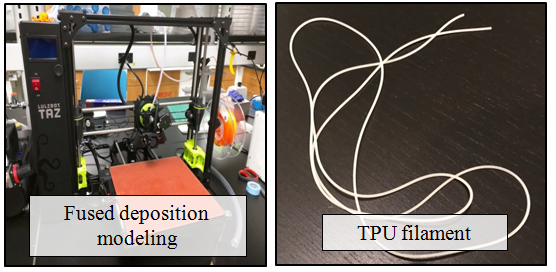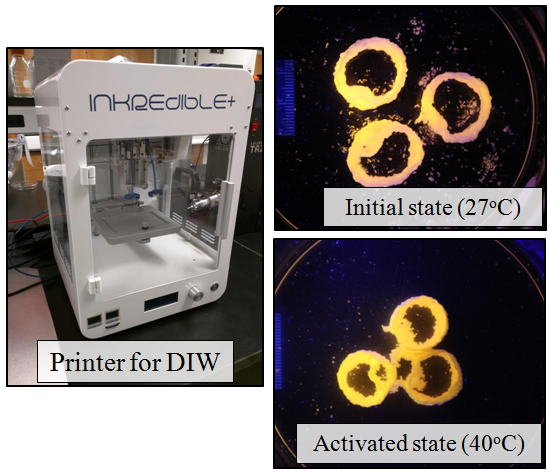Project description (NIH project website):
Right ventricle–to–pulmonary artery (RV-PA) conduits are frequently used as a surgical palliative treatment for a variety of congenital heart diseases in infants and children. Due to the growth of the infant or child, or complications like kinking or thrombosis of the device, these conduits require replacement which may involve several major open heart surgery before adulthood. We propose to utilize 3D printing to design and develop a novel RV-PA conduit that increases its size via tailored self-unfolding triggered by flow and time so that fewer complications as well as surgeries are required to maintain and develop normal pulmonary blood flow from infancy to adulthood. It is envisioned that 3D printing will also allow for improved precision in patient customization and on-demand design changes to enable better functionality. We anticipate that self- unfolding mechanisms and associated shape changes will result in operation of the conduits over longer periods of infant and child growth into adulthood. In the R21 phase, we will design, fabrication, surface modification, and in-vitro testing of self-unfolding RV- PA conduits. We will first conduct printing parameter studies for 3D printing of FDA-approved materials for fabrication of RV-PA conduits with variable dimensions. Simultaneously, we will utilize numerical simulations to determine design parameters that allow size changes and validate these using in-vitro tests for functionality and biocompatibility. In the R33 phase, we will upgrade our 3D printer and refine the RV-PA conduits to enable printing with better resolution and with fluoropolymer inks to eliminate the need for surface modification. Finally, we will validate in- vivo operation using comprehensive hemodynamic evaluations and post-mortem gross-histological evaluation in a sheep model. We will analyze extracellular matrix formation, characterize endothelial cell function and white blood cell activation, and quantify immunohistochemistry for inflammation analysis. We anticipate that these studies will enable a new class of RV-PA conduits as well as serve as a model for designing patient-specific shape changing biomedical implants for infants that are capable of growing at the same rate to reduce the number of follow up operations.
- We are developing 3D printing processes (fused deposition modeling) to 3D print shape-changing RV-PA conduits with FDA-approved materials such as Thermoplastic Polyurethane (TPU).
- We are developing thermoresponsive inks for direct ink writing (DIW) to 3D print RV-PA conduits that can change their shape with varying temperatures.
Team members:
PIs: Dr. David Gracias, Dr. Sung Hoon Kang, Dr. Lew Romer & Dr. Narutoshi Hibino
Postdocs & Students: Dr. Ozan Erol, Jiayu Liu (PhD), Kunihiko Kobayashi (Visiting Scholar), Zhuoran Jiang (MS), Emilio Bachtiar (MS), Azra Horowitz (MS), Aishwarya Pantula (MS), Jiaxin Xu (Visiting Student)
Collaborators: Dr. Priya Sekar (JHMI) and Dr. Michael Parsons (JHMI)


